Nway Oo Kyan Mar (Burmese for “Spring Health”) is a clandestine clinic set up by a group of medical students who joined the Civil Disobedience Movement and fled Yangon after the 2021 coup. It mainly treats displaced civilians near the Thai border in war-torn Kayah State, where fighting between anti-regime resistance forces and junta troops is rampant.
As in other resistance strongholds, clinics and hospitals in Kayah State are frequently targeted by the junta’s air raids and shelling, disrupting medical access for resistance fighters and civilians.
In May this year, two wards of the Nway Oo Kyan Mar clinic were destroyed in a junta air strike, forcing the clinic’s more than 30-strong team of doctors, medical students, nurses, midwives, local volunteers and patients to move to a safer location for the third time.
In a previous artillery attack, one staff member, a young woman aged just 18, suffered a severe head injury requiring emergency treatment, clinic co-founder Ko Htoo recalled. She recovered, however, and continues her volunteer work with the group.
The work of the clinic and the commitment of its staff have been documented in black and white by ethnographer and documentary photographer Khin Sandar Nyunt, who spent more than two years with the medics.
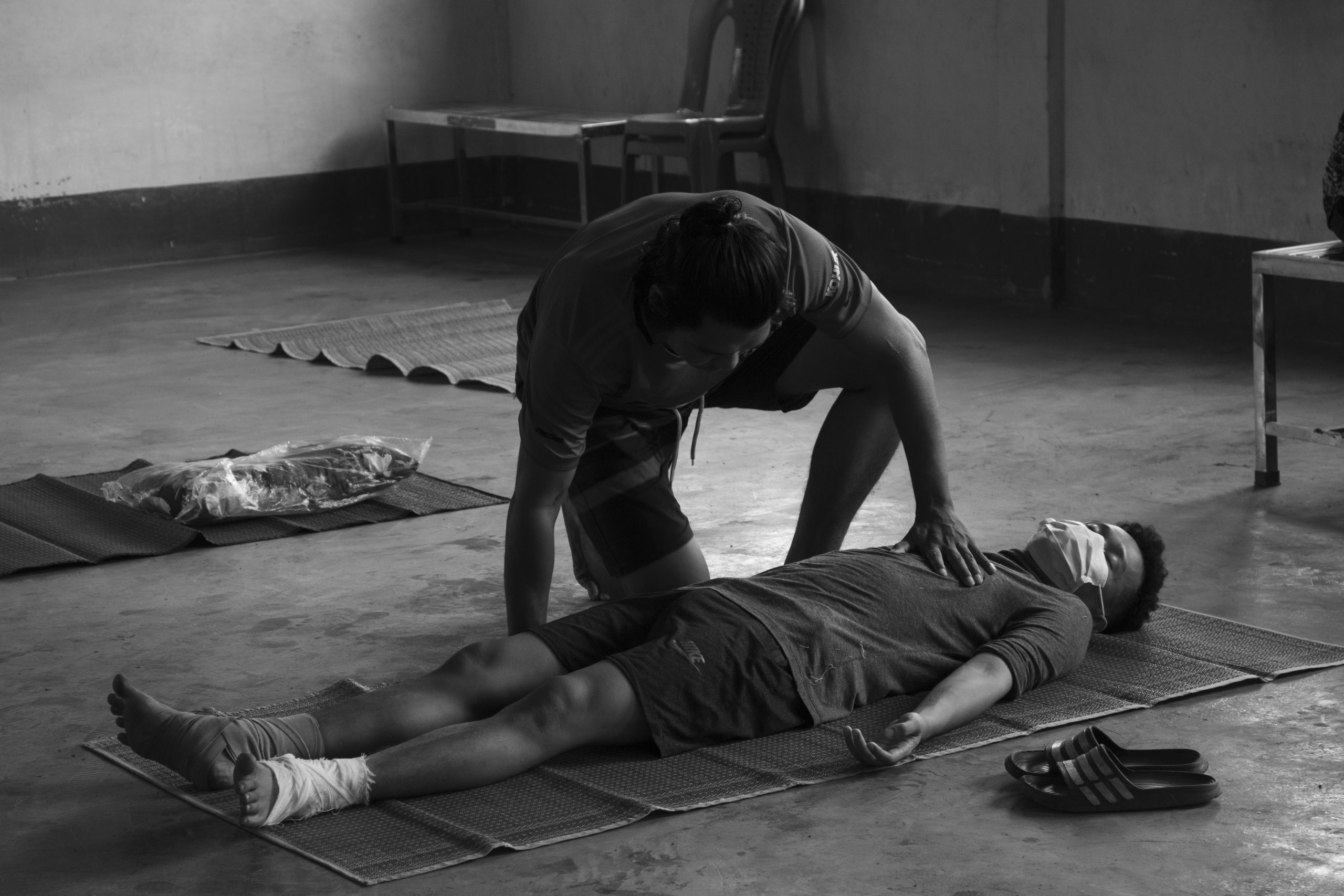
During her stay with them, she narrowly escaped death in a junta air strike, recording the hellish moment with her phone’s video camera. Describing the attack, she recalled, “I felt like I was in a killing field. I thought I was dead.”
Some of her work from her time at the clinic was featured in a photo exhibition, “Indivisible”, organized by New Burma in Chiang Mai, Thailand in mid-October to raise awareness of the difficulties that frontline healthcare workers face, and to drum up support for their dangerous work in Kayah and other resistance stronghold areas.
At a panel discussion on the photo exhibition, Ko Htoo repeated the message that the military is targeting clinics and IDP (internally displaced persons) camps in Kayah State every day with artillery shelling and air strikes.
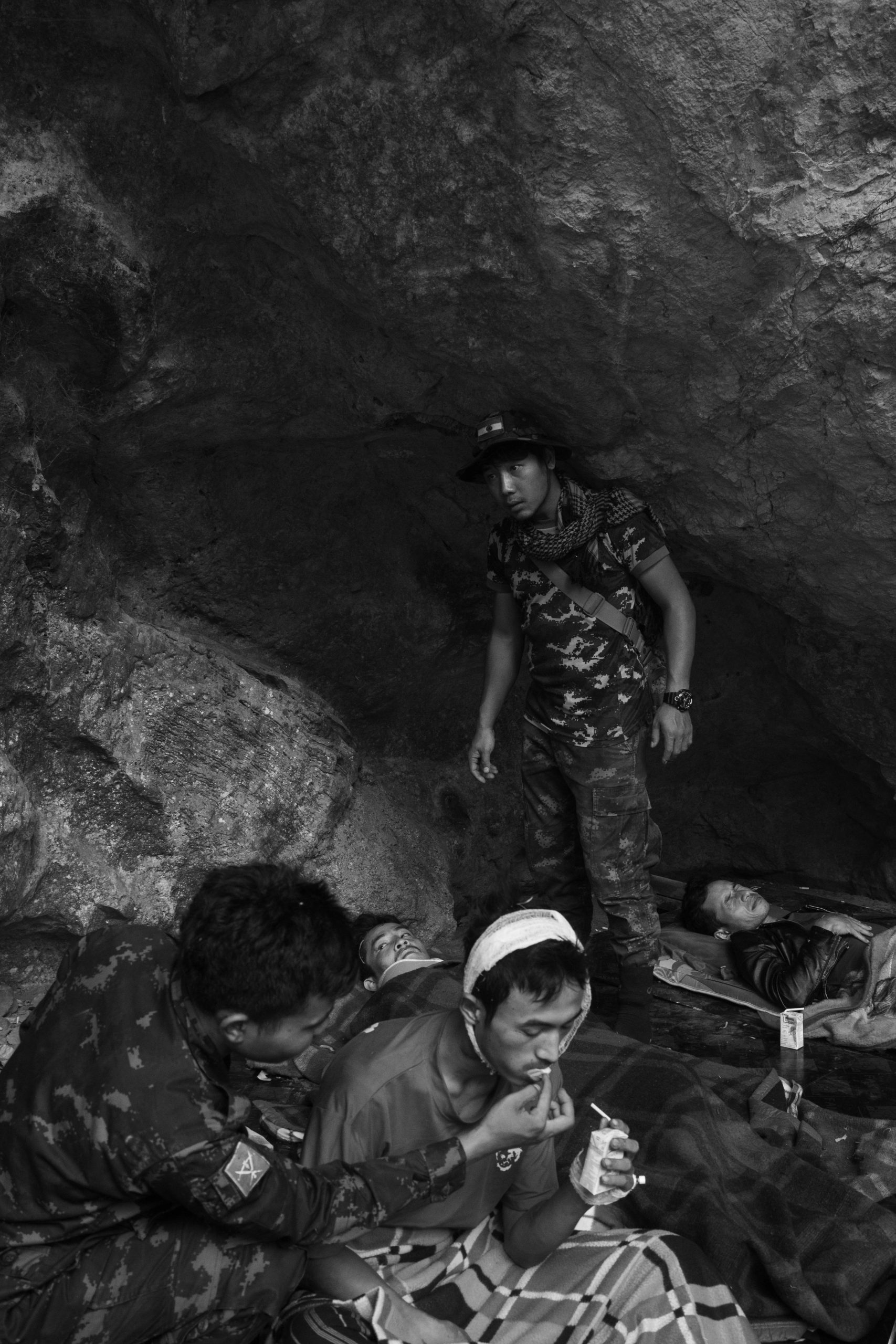
He and his colleague Dr. Ye Zaw called on international organizations for help sourcing healthcare provisions, as local donors, the primary source of the clinic’s funding, are increasingly facing targeted arrests by the junta, as well as monitoring and blocking of their bank accounts. The group is also working to build a new clinic, which they estimate will cost around US$41,000.
“[We possess] only a stethoscope, only a syringe. We don’t have anything to resist the jet fighters. They [Nway Oo Kyan Mar members] are really strong and they can resist very well,” he said.
For Khin Sandar Nyunt, documenting the dedicated frontline healthcare personnel is also a way of resisting the junta. She added she wanted to detail the extent to which the junta targets civilians and healthcare, and the inhumanity of that policy.
The Irrawaddy interviewed her to learn more about her experiences documenting the group.
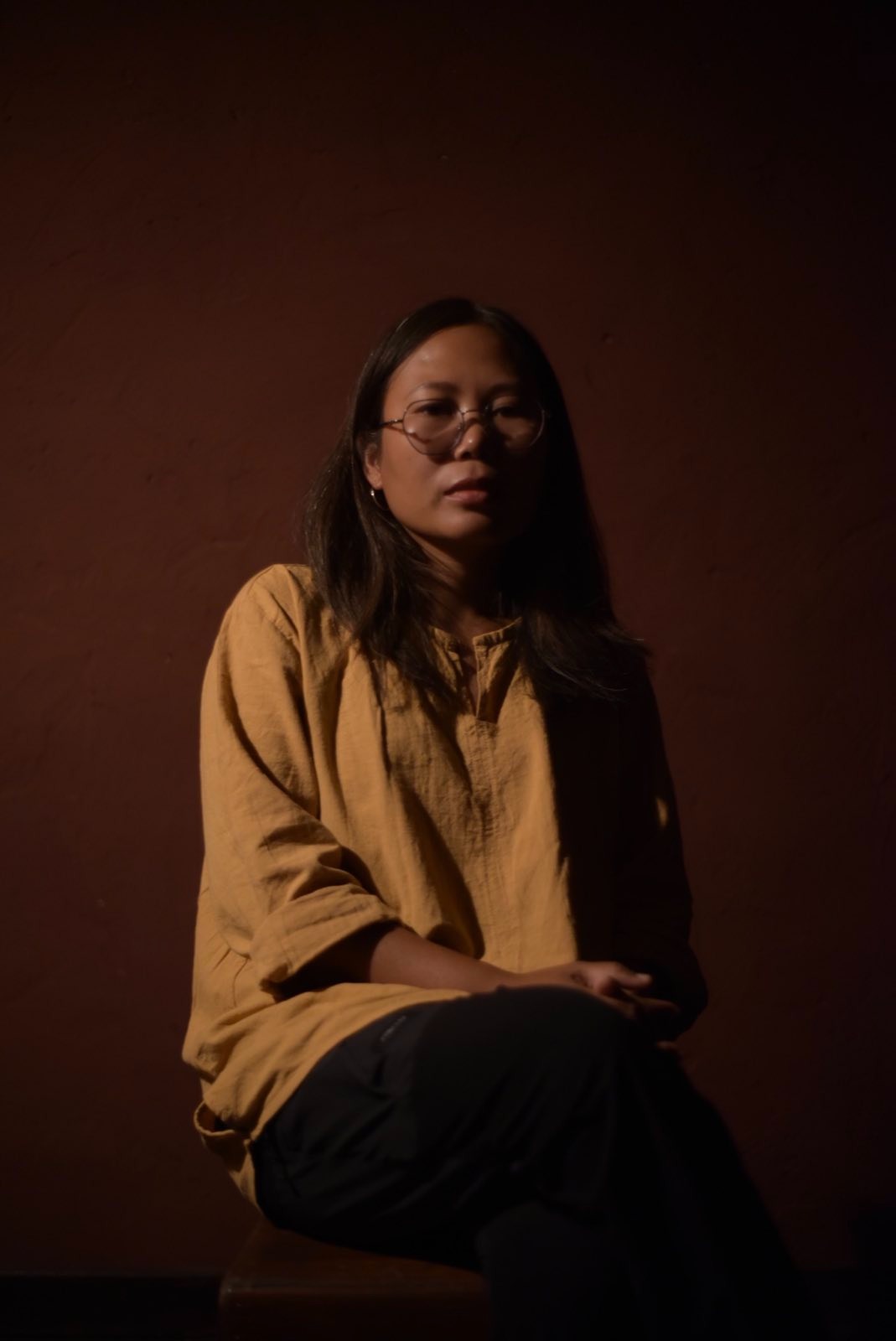
Was this your first documentary project?
I studied photography for my work, ethnography, to use as a visual aid in cultural research. But I could not continue my research and travel because of the coup. Photography became the only thing I could do. So, I started taking photos of protests from dawn to dusk starting on Feb. 5, 2021 in Yangon. Later, it was not possible to live in Yangon as well as take photos. People were not able to organize street protests like before, and people holding cameras were increasingly targeted. There were a lot of restrictions on the things I wanted to do in Yangon. So, I decided to go somewhere, and I chose Karenni [Kayah State]. It was around June 2021 and heavy fighting had already erupted there at the time. On my own, I left for Karenni, searching for new experiences. I wanted to know the situation on the ground, the Karenni revolution, and about the organizations operating on the ground. So, I decided to stay with those organizations. Nway Oo Kyan Mar was the first organization I stayed with, and I documented their daily activities. So, it was also the first organization I documented.
Your documentary photos are now on display. What is your view of the role of photographers in the armed revolution?
It is important to document the revolution. There are many things that need to be done on the ground, either in armed revolution or administration. Everyone is busy and they don’t bother to make a record. I think it is crucial to document the revolution in photos or in written words. Resistance fighters are doing their job, and those who document them also play an important role.
What difficulties did you face, and what were your most memorable moments?
Security is the first priority when taking photos during the revolution. Some people are working secretly for the revolution. There are also civilians. So, I have to make sure their faces do not appear in photos, and at the same time I also have to make sure that does not impact the tone of the photo. That can be a struggle. About the memorable moments… Displaced people returning through a minefield to their village at midnight to fetch rice. The Karenni Nationalities Defense Force warned that there were a lot of mines. But the displaced people had run out of rice, and they secretly went back to their village at night to bring rice. A woman stepped on a land mine. She was hit badly. She arrived at [Nway Oo Kyan Mar clinic] around midnight. She had lost one of her legs, and was injured all over her body. She needed blood and I donated blood. It was around 3 a.m. when I donated. She was to undergo an operation at around 6 a.m. I wanted to take photos of it. I did not rest or sleep after donating blood. I couldn’t get to sleep. She was taken to the operating room at around 6 a.m., and I also went into the operating room and took photos. After taking just a few photos, I felt dizzy and I fell down. It was a memorable moment. My doctor friends teased me about that. It was the first time and the last time I will fall down in an operating room.
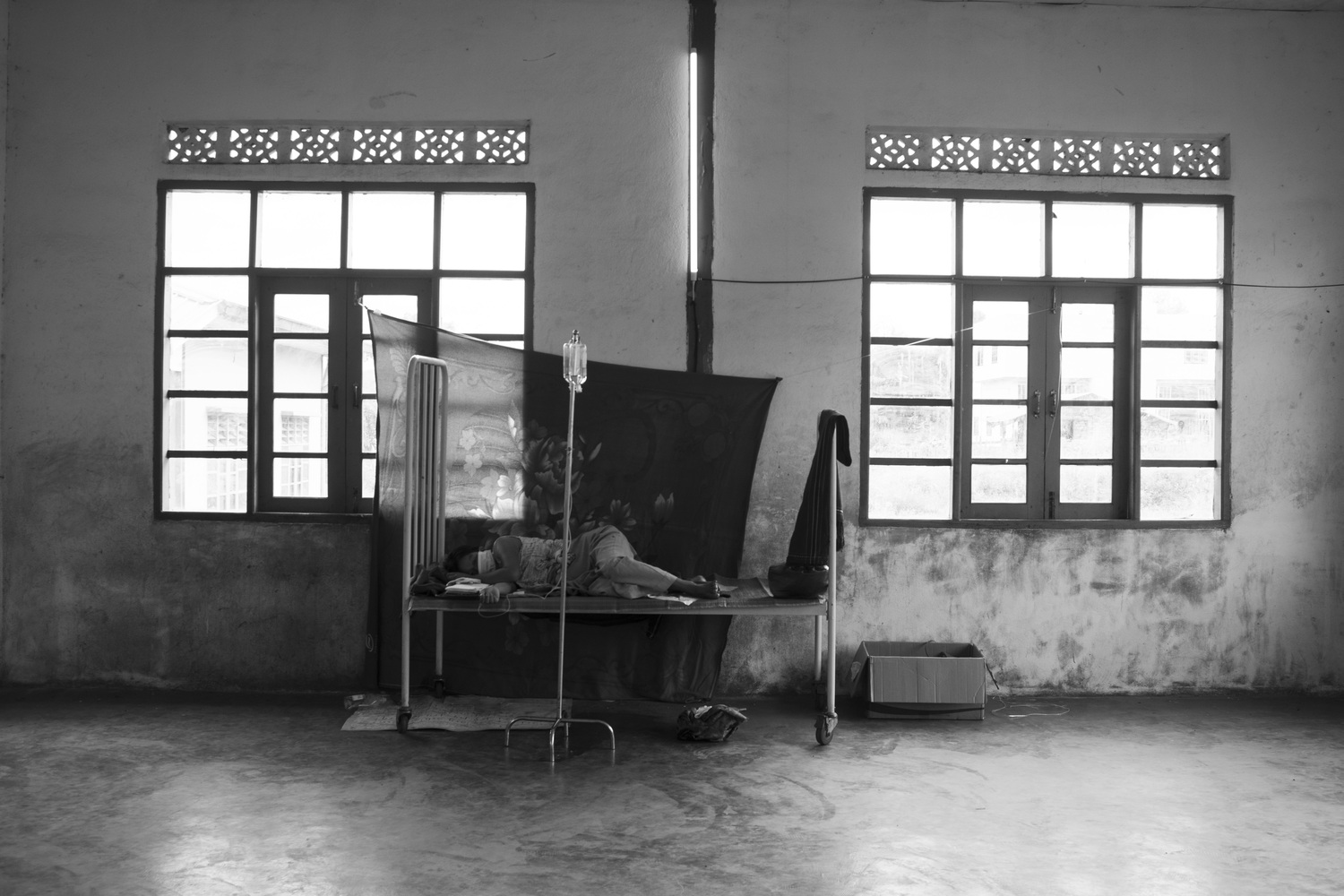
We have viewed the footage of the bombing the hospital on May 20. Can you tell us about what happened that day?
There had been continuous heavy fighting in our area before that day. The regime used aircraft, artillery and land mines during the fighting. It was very risky to go to the conflict zone during the intense fighting. So, I decided to stay with the medical team and document how they operate daily. I slept in an underground bunker with all the others on the night of May 19. A junta aircraft dropped bombs around 6.30 a.m. on May 20. I thought, ‘The hospital has finally been targeted, and I might be killed.’ But I kept my phone in hand so that I could get a video record if something bad happened. Two patient wards were hit and exploded. Motorbikes and other things near the wards caught fire. We had to evacuate all the patients to the bomb shelter when the aircraft came and dropped bombs. A person who was taking care of a patient was injured by shrapnel. After the airplanes left we moved the patients out of the bomb shelter to a nearby rock, which was safer. Then, we took the patients to a safer healthcare facility in cars. I documented the whole process.
What do you expect will come from the documentary photos you have taken?
I did it for the sake of documenting history. I wanted to show the pictures to the public when the time was right. So I did. I hope any organization providing health care services on the ground in the current revolution continues to receive assistance. I want people from outside to be more aware of the organizations struggling in Karenni State. I want people to be aware of how devastating and inhumane air raids are.
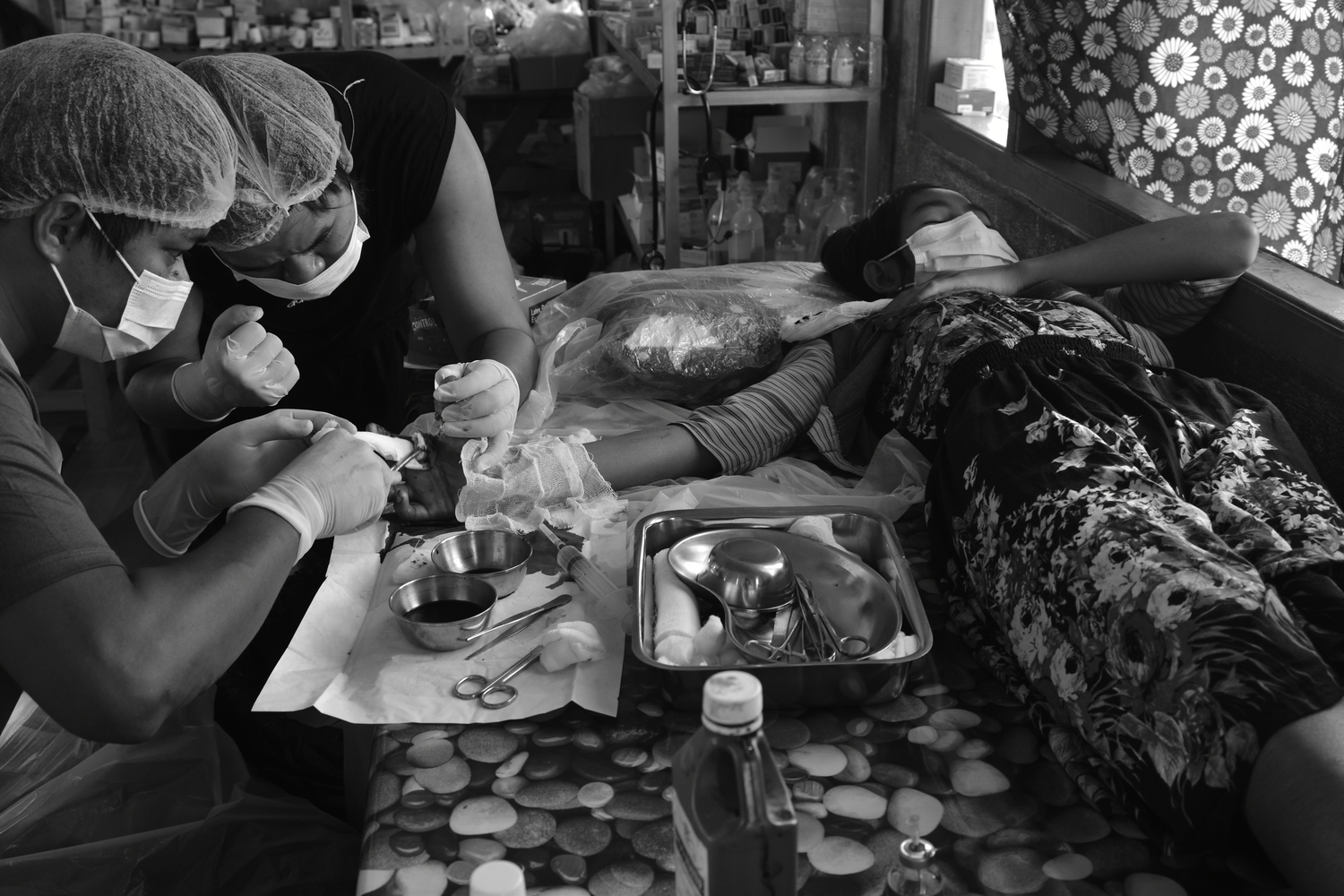
What are the medical needs? How important do you think health care is to the revolution?
Health care services are crucial in the revolutionary period. Resistance fighters need health care services. And civilians displaced by the fighting do not get proper nutrition and suffer from the hardship of living in forests or camps. There is insufficient medicine. So, it is very important to provide health care services. The regime is also aware of that. That’s why it is targeting health care organizations, hospitals and clinics. They do so to weaken the people, and cause trouble for resistance fighters. Please support health care providers during the revolution. It is critical to support any organization or health care facilities providing health care services on the ground. In Karenni State, we are confined to the conflict zone, and we struggle to survive there. It is like all of us are involved in the fighting. We will neither flee nor desert. We have been fighting together. It is critical that people are resilient in the long journey of the revolution. There is a need to keep them healthy to maintain their resilience.
For more pictures, please visit https://karenni-diaries.com/

















